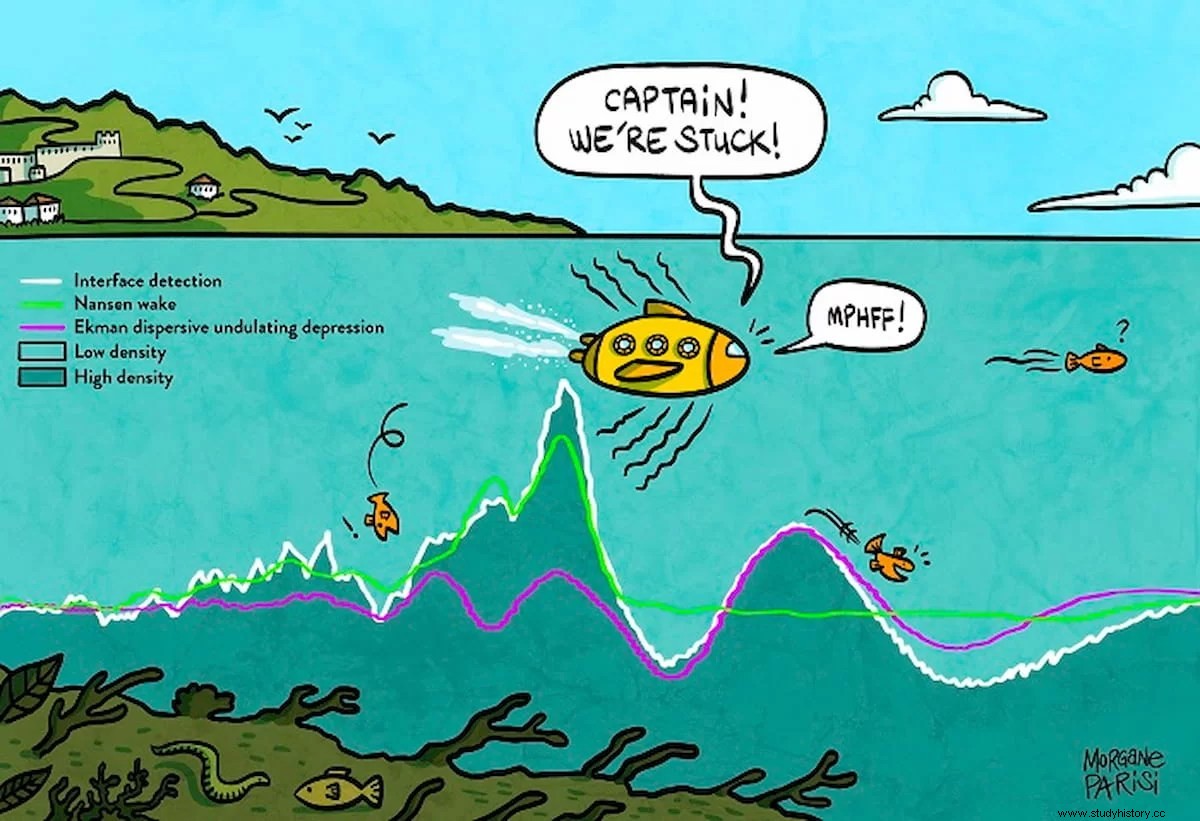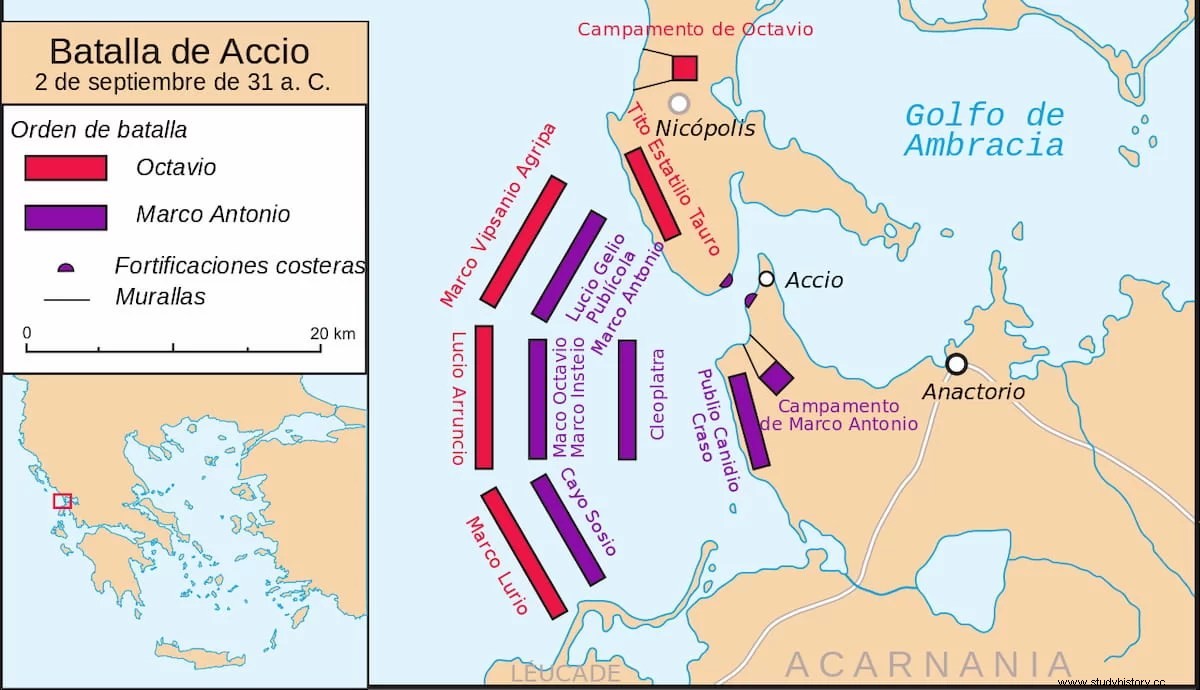In August 1893, the Norwegian explorer Fridtjof Nansen experienced a strange phenomenon when he was sailing in the Arctic north of Siberia near the Nordenskiöld archipelago:his ship, the Fram , he was slowed down by a mysterious force that barely allowed him to maneuver, let alone reach normal speed.
What causes ships to mysteriously slow down or even stop while traveling, even though their engines are working properly? This phenomenon, which Nansen was the first to observe in 1893, was experimentally described in 1904 without all the secrets of this dead water being understood. .
Now an interdisciplinary team from the CNRS (Centre national de la recherche scientifique ) and from the University of Poitiers has explained this phenomenon for the first time:the speed changes of ships trapped in dead water are due to waves acting as an undulating conveyor belt in which ships move from one side to another .

In 1904, the Swedish physicist and oceanographer Vagn Walfrid Ekman demonstrated in a laboratory that waves that form below the surface at the interface between the saltwater and freshwater layers that form the top of this area of the Arctic Ocean interact with the ship, generating resistance.
This phenomenon, called dead water , is observed in all seas and oceans in which waters of different densities are mixed (due to salinity or temperature). It denotes two entrainment phenomena observed by scientists. The first, Nansen wave drag, causes a constant and abnormally low speed. The second, the Ekman drag, is characterized by oscillations in speed in the trapped boat.
The cause of this was unknown. Physicists, experts in fluid mechanics and mathematicians from the Institut Pprime of the CNRS and the Laboratoire de Mathématiques et Applications (CNRS/Université de Poitiers) have tried to solve this mystery. They used a mathematical classification of different internal waves and the analysis of experimental images at the sub-pixel scale, a first.

They showed that these speed variations are due to the generation of specific waves that act like an undulating conveyor belt on which the ship moves back and forth. Scientists have also reconciled the observations of Nansen and Ekman. They have shown that the Ekman oscillation regime is only temporary:the ship ends up running away and reaches the Nansen constant speed.
The work is part of a major project investigating why, during the Battle of Actium (September 2, 31 BC), the great Egyptian-Roman ships lost when they faced Octavian's weaker ships. Could the Bay of Accio, which has all the hallmarks of a fjord, have trapped the fleet of Antony and Cleopatra in dead waters? ?
So now we have another hypothesis to explain this resounding defeat, which in ancient times was attributed to the remoras, sucker fish that were stuck to the hulls of ships, according to legend.
